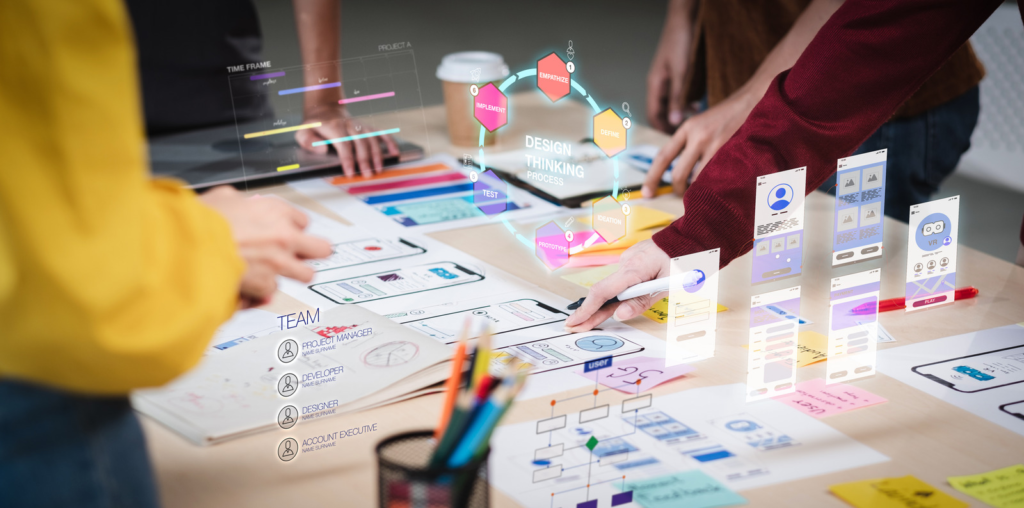Service design and design thinking are often used interchangeably, but there are some key differences between the two methodologies.
There are some similarities between service design and design thinking:
- Both are human-centered approaches that observe and interpret users needs and behaviours
- Both aim to create services that are useful, usable, desirable, efficient and effective
- Both are systematic and iterative processes that occur in ever-learning cycles
What design thinking does that service design does not:
- Provides a starting point if the path forward is unclear
- Allows you to fully understand a problem and arrive at a common goal
- Finds a tailored solution unique to your organization to achieve that goal
Design Thinking vs Service Design
What service design does:
- Develop a service (when the desired outcome is a service), including planning and organizing of people, infrastructure, communications and material elements of a service
Service design refers to designing of an outcome that will be a service, such as a food delivery service like Uber Eats, or an online driver’s license renewal service. Examining the complete service journey at a deeply detailed level, service design looks to optimize the experience for both the customer and for the employees. It involves the planning and organizing of the people, infrastructure, and material elements of a service to improve its quality and the interaction between the service provider and their customers.
While looking at the user’s journey, service design also takes into account the range of employee roles within an organization. It seeks to optimize usability and sustainability in all delivery channels for both employees and users. Using a passport application as an example, we want to create an optimal user experience for the applicant navigating the passport service website, and also take into account the experience of the employees (and the applicant) at the passport office as well.
Both physical and digital environments are covered in service design. For example, in a passport renewal service, the service encompasses both the website where the user downloads the application forms and the passport office where the user can submit their application in person itself.
A tool that is often used in service design is a service design blueprint, which visually displays the user’s experience of a service, including all interactions and touchpoints that the customers and employees engage with. They are useful for visualizing complex or multi-channel service offerings to better understand the causes of root problems, or areas in need of improvement during a specific customer journey.
Design thinking is a broad methodology that is user-focused, and can be applied to a wide variety of challenges. It solves challenges through five iterative steps which involve empathizing with the user, experimenting with various solutions, testing, and scaling the most promising results.
Unlike service design, design thinking is unrestricted by the parameters of a predetermined solution. Often, it can reveal new or different pathways to achieve a goal that might not have been explored otherwise.
Design Thinking versus Service Design
For example, you may learn something new about your end users in the empathize phase that will totally redefine the problem you thought you were solving – and that’s great! With design thinking, you can have confidence in your end solution because the solution aligns best with the knowledge gained about the true problem.
If you’re unsure what your solution should look like or where to start, begin with the design thinking process to help you understand the problem further, as this will allow you to find a tailored solution unique to your organization to achieve that goal. After using design thinking to determine what the service will look like, you can then implement service design to design the service at a more detailed level.
Spring2 Innovation specializes in design thinking training to equip our clients with a comprehensive toolkit to solve a variety of problems in their unique work environment. Depending on the problem, Spring2 Innovation covers aspects of service design as it relates to clients specific business challenges as they are revealed in the design thinking process.
To sign up for our design thinking training for business and the public sector, check out our upcoming sessions.
